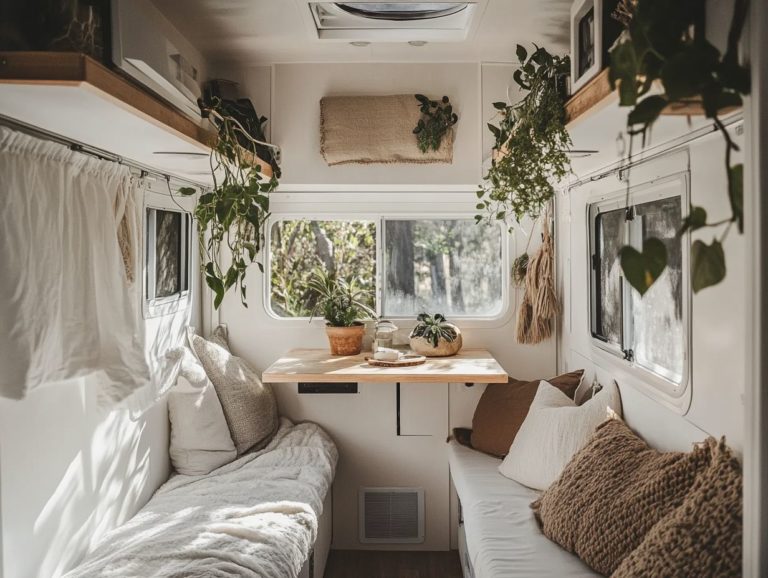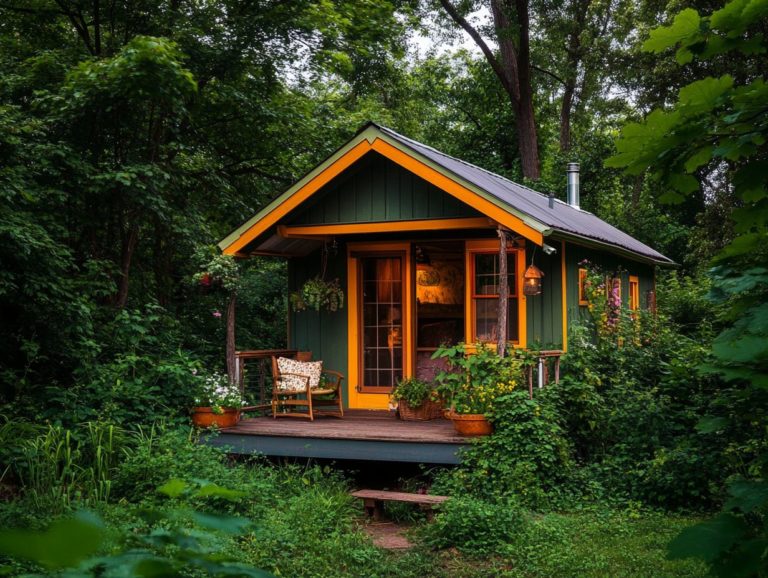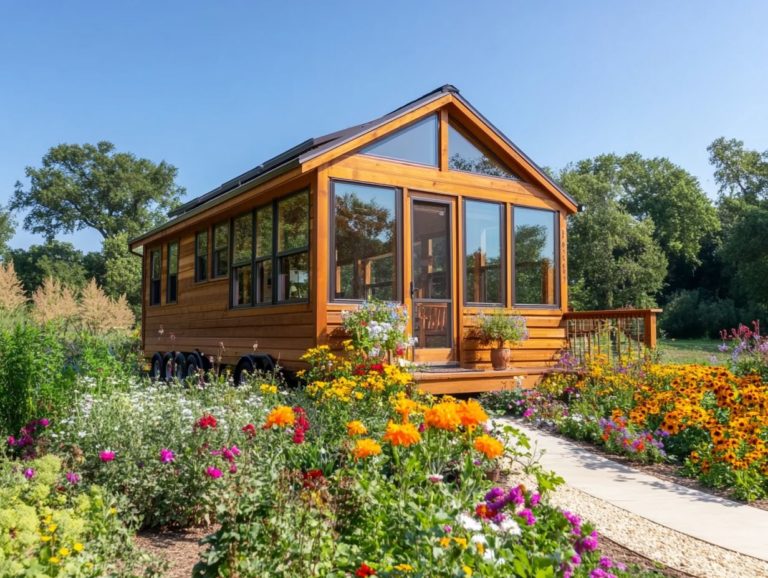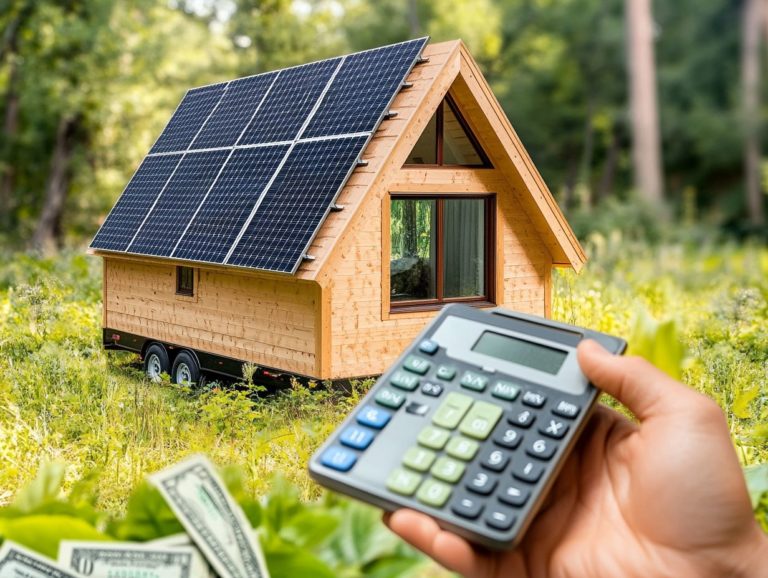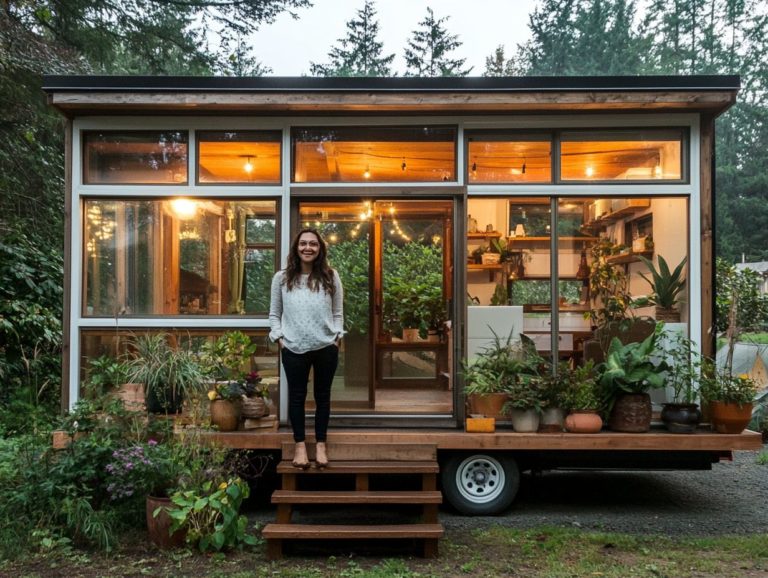Exploring Tiny House Innovations
Tiny houses have captured the world’s imagination. They represent a lifestyle shift that emphasizes simplicity, sustainability, and creativity.
This article explores the advantages of tiny living. You’ll find everything from environmental benefits to financial savings and unique lifestyle choices.
Discover innovative designs that optimize space and functionality. We also address challenges, such as legal issues and maintenance.
For those eager to start their tiny house journey, a step-by-step guide is included. Explore this exciting trend and see what tiny living can offer you!
Contents
- Key Takeaways:
- Defining the Concept
- Advantages of Tiny Houses
- Innovative Designs for Tiny Houses
- Challenges and Considerations for Tiny House Living
- Building and Designing Your Own Tiny House
- Frequently Asked Questions
- What are some common features found in tiny house innovations?
- What are some unique design elements found in tiny house innovations?
- How have tiny house innovations addressed sustainability and eco-friendliness?
- What are some challenges associated with exploring tiny house innovations?
- What are some factors to consider when choosing a tiny house innovation to live in?
- How can individuals stay updated on new tiny house innovations and designs?
Key Takeaways:
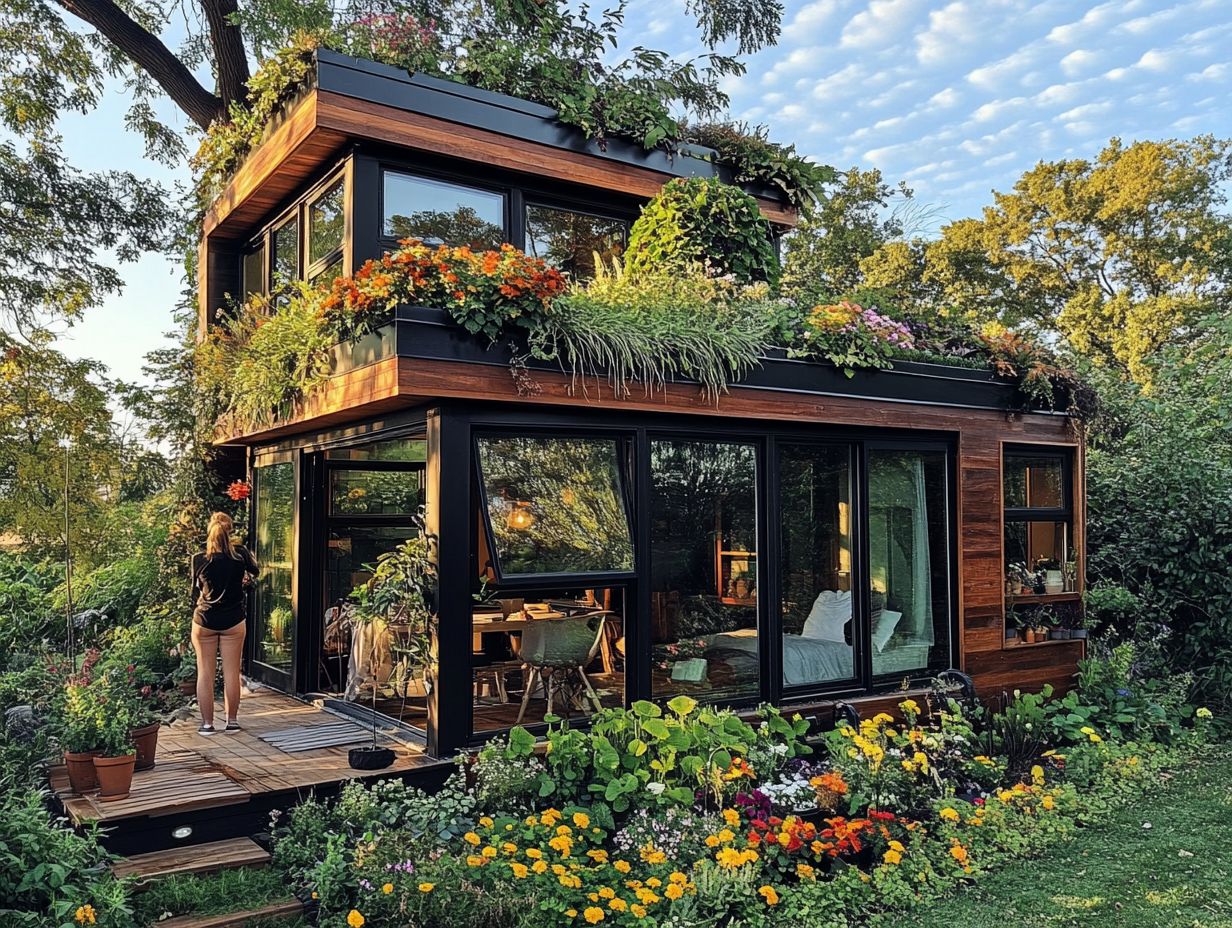
- Tiny houses provide numerous benefits, from a smaller environmental impact to financial freedom.
- Innovative designs maximize functionality and include eco-friendly features.
- Consider potential challenges such as local laws about where you can place a house and maintenance tasks.
Defining the Concept
The tiny house movement embodies a trend toward minimalist living. It prioritizes compact homes and sustainable solutions that focus on affordability and environmental care.
This movement promotes tiny homes small dwellings designed to reduce space and resource use. By embracing these designs, tiny houses offer a compelling alternative to traditional housing, appealing to those seeking financial freedom and a simplified lifestyle.
Advantages of Tiny Houses
Tiny houses come with many advantages tailored to different lifestyle preferences. They provide financial freedom through cost-effective solutions, enabling efficient resource allocation.
These homes also encourage sustainable living practices. You can significantly lower your carbon footprint and positively impact the environment.
Benefits for the Environment
The environmental benefits of tiny homes are impressive. These compact dwellings are designed to minimize your carbon footprint and promote eco-friendly features like solar panels and composting toilets.
By adopting a minimalist lifestyle, you will likely consume fewer resources and create less waste compared to traditional homes. Conventional houses require extensive materials and energy, leading to a larger ecological footprint. In contrast, tiny homes use clever designs with innovative storage solutions to encourage a limit on possessions.
This shift not only reduces resource consumption but also fosters a sense of environmental responsibility that can resonate throughout communities.
Financial and Lifestyle Benefits
Choosing a tiny home can lead to significant financial freedom. You can downsize your living space, lower property taxes, and even create opportunities for rental income.
This lifestyle cuts down ongoing expenses like utility bills and maintenance costs. It also inspires a decluttering journey that promotes mindfulness and intentional living. With a minimalist approach, you might find extra cash flow for savings, investments, or enriching experiences instead of accumulating material possessions.
As the tiny living trend grows, it highlights the economic benefits of lower mortgage payments, potentially even eliminating them. You can transform your downsized space into a profitable vacation rental by implementing innovative storage solutions for tiny houses, easing financial burdens and building community connections.
Innovative Designs for Tiny Houses
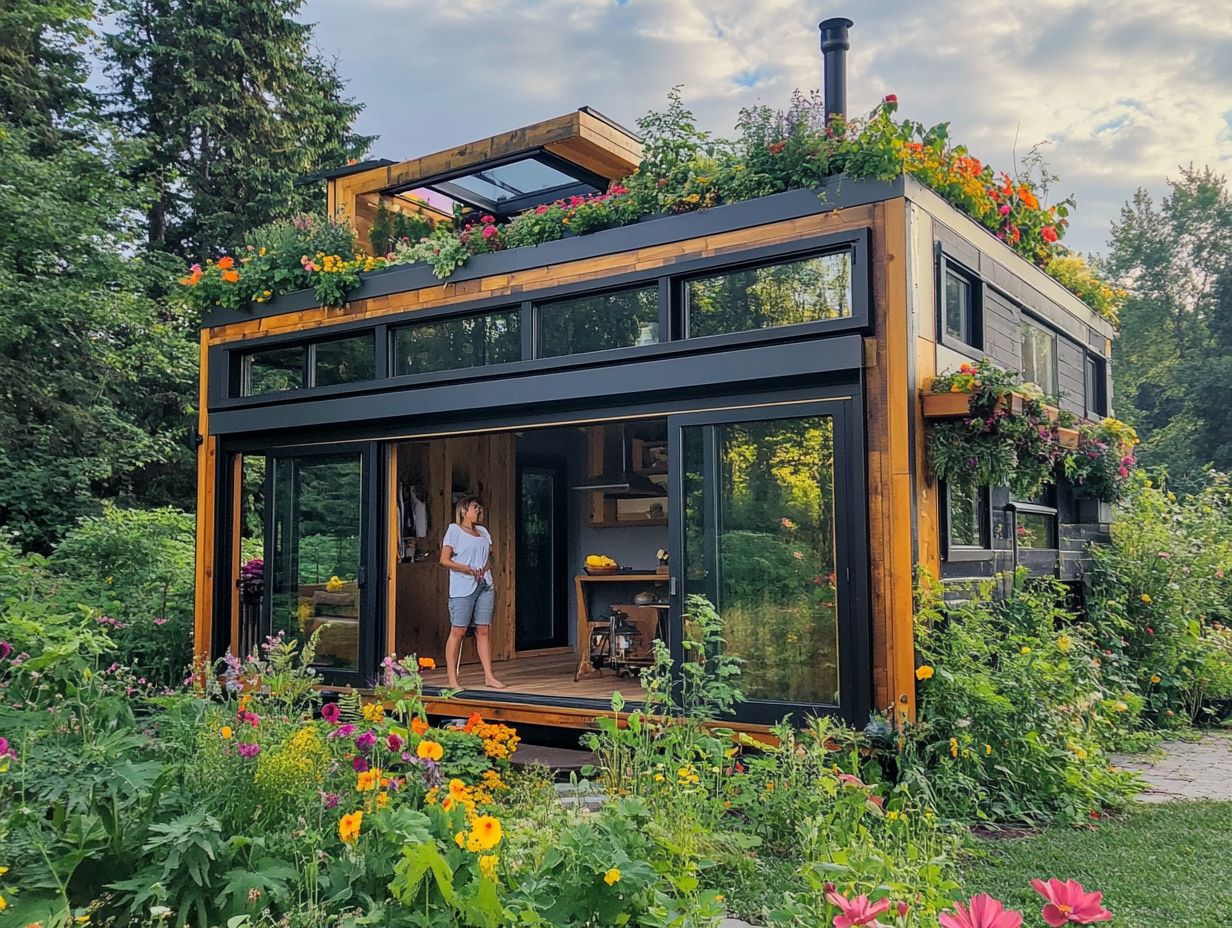
Innovative designs are essential for maximizing space efficiency in tiny houses. This allows you to enjoy comfortable living without compromising on style or functionality.
By integrating smart technology and furniture that serves more than one purpose, you can create a home that is both practical and visually appealing.
Maximizing Space and Functionality
Maximizing space and functionality in tiny homes involves embracing innovative storage solutions and creative layouts. These elements transform compact spaces into efficient living environments.
Incorporating multifunctional furniture ensures each piece serves multiple purposes. For example, imagine a sofa that easily converts into a guest bed or a dining table that folds out from the wall when needed. This approach lets you enjoy aesthetic appeal while keeping your living areas free from clutter.
Utilizing clever organization techniques, like vertical storage and under-bed drawers, can significantly boost usability. Embracing minimalism and thoughtful design creates a harmonious environment that enhances the charm of tiny living. This makes it an appealing choice for those seeking simplicity and efficiency.
Eco-Friendly Features
Tiny houses are now buzzing with exciting eco-friendly features, like solar panels and energy-efficient solutions. These innovations aim to minimize environmental impact and promote sustainable living.
These compact dwellings often utilize sustainable materials for construction think reclaimed wood and recycled metal. This approach not only reduces waste but also lowers energy consumption during production. Many of these homes incorporate composting toilets and rainwater harvesting systems, elevating water conservation to the next level.
By embracing these innovations, tiny homes become more than just a lifestyle choice; they align seamlessly with the growing movement toward caring for the environment.
By adopting these practices, you can drastically shrink your carbon footprint and lead the way to a sustainable future. Plus, you might inspire others to explore more sustainable practices in their own living spaces.
Challenges and Considerations for Tiny House Living
Embracing tiny house living comes with an array of benefits, but it also invites a set of challenges that deserve your attention.
Notably, legal hurdles like zoning laws can complicate your journey. The maintenance and upkeep of these compact homes need careful planning.
Legal and Zoning Issues
Legal and zoning issues present significant hurdles for tiny home enthusiasts. Often, they obstruct the placement and occupancy of these innovative dwellings due to outdated regulations and property taxes.
In many areas, restrictive zoning laws can prevent tiny houses from being recognized as legitimate residences. This leaves you to navigate a complex maze of local ordinances, often leading to a frustrating cycle of fines and legal disputes.
Establishing communities can also be challenging, as municipalities may fail to acknowledge the necessity for shared spaces or communal facilities.
However, there s hope on the horizon. Advocacy efforts are gaining momentum in various states, with organizations pushing for more flexible zoning options. By lobbying for changes to building codes and advocating for designated tiny house villages, these groups aim to create more inclusive housing solutions that cater to your desire for affordable and sustainable living.
Are you ready to explore the tiny house lifestyle?
Maintenance and Upkeep
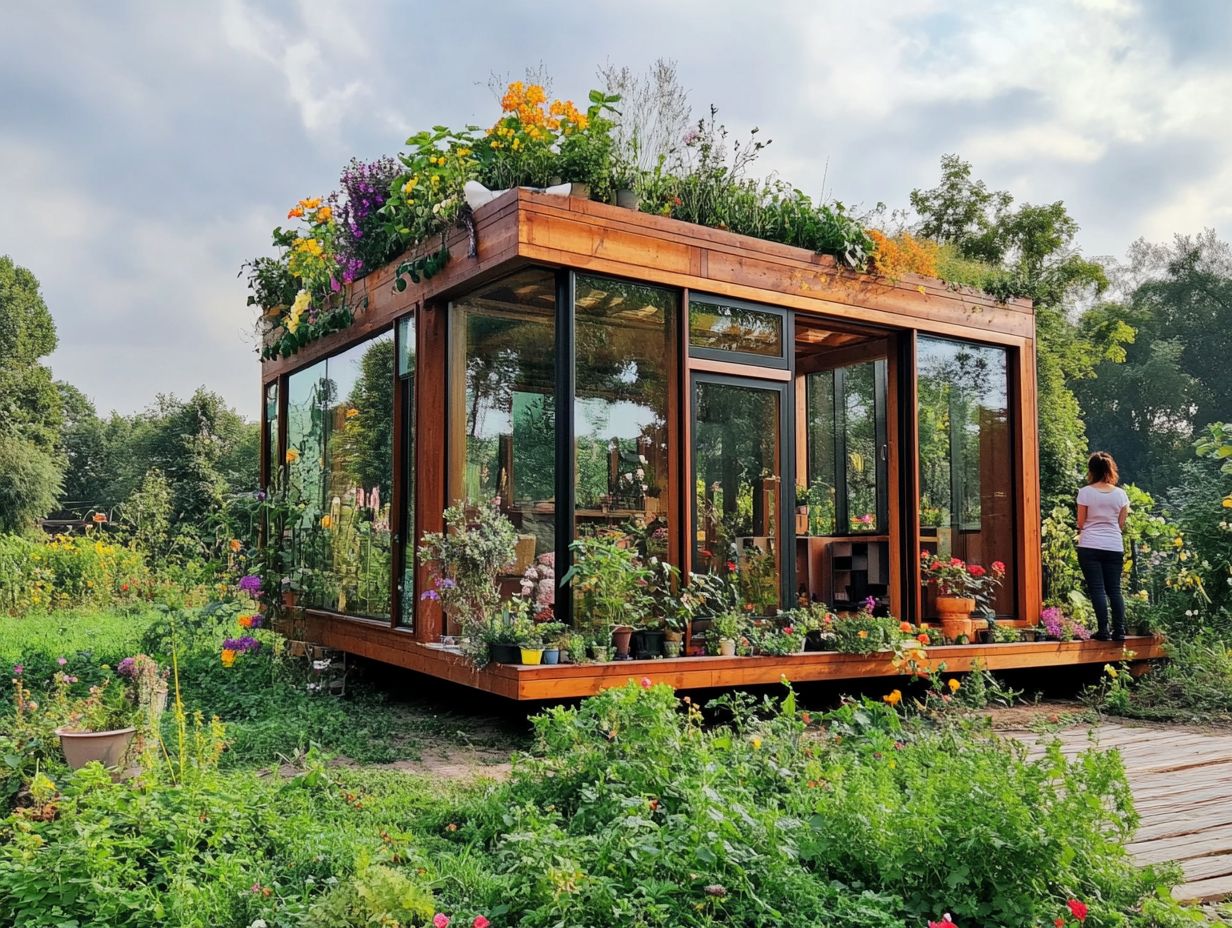
Maintaining tiny homes requires a proactive approach. Their unique features and designs demand special attention.
As a tiny homeowner, focus on critical aspects. Ensure proper insulation, manage moisture levels, and check for signs of wear and tear regularly.
Seasonal care is essential. For example, during the winter months, enhance insulation and monitor for ice buildup. Spring is an ideal time to clean gutters and assess the roof.
Consider using tiny home kits. They offer tailored solutions for repairs and upgrades. Stay vigilant about common issues like plumbing leaks or structural shifts to ensure your home s longevity.
By embracing these practices, you can cultivate a harmonious living environment that stands the test of time.
Building and Designing Your Own Tiny House
Building your very own tiny house is an exciting adventure! You get to add your personal touch and creativity to every inch.
By following a step-by-step approach, you can seamlessly integrate innovative designs and use tiny home kits, ensuring optimal efficiency in your project.
Step-by-Step Guide
This meticulously crafted guide takes you through the essential phases of building your own tiny home. It covers everything from the spark of initial design concepts to the final touches that transform your space into a welcome and efficient living environment.
By breaking down each stage, this guide gives you the power to navigate the complexities of tiny house construction with confidence. Embrace the concept of small dwellings.
It starts with the creative process: brainstorming and sketching out ideas that cater to your specific needs and preferences. Consider layout, natural light, and clever storage solutions, which are key aspects of sustainable living.
Next, delve into the practical aspects that form a solid foundation for your project: budgeting, sourcing sustainable materials, and understanding local building codes, all of which impact affordability.
As you move forward, the focus shifts to innovative designs and features that elevate both aesthetics and functionality. Ensure that every square foot is maximized, promoting a harmonious, minimalist lifestyle with eco-friendly features.
Frequently Asked Questions
What are some common features found in tiny house innovations?
Common features include space-saving furniture, energy-efficient appliances, and innovative storage solutions.
What are some unique design elements found in tiny house innovations?
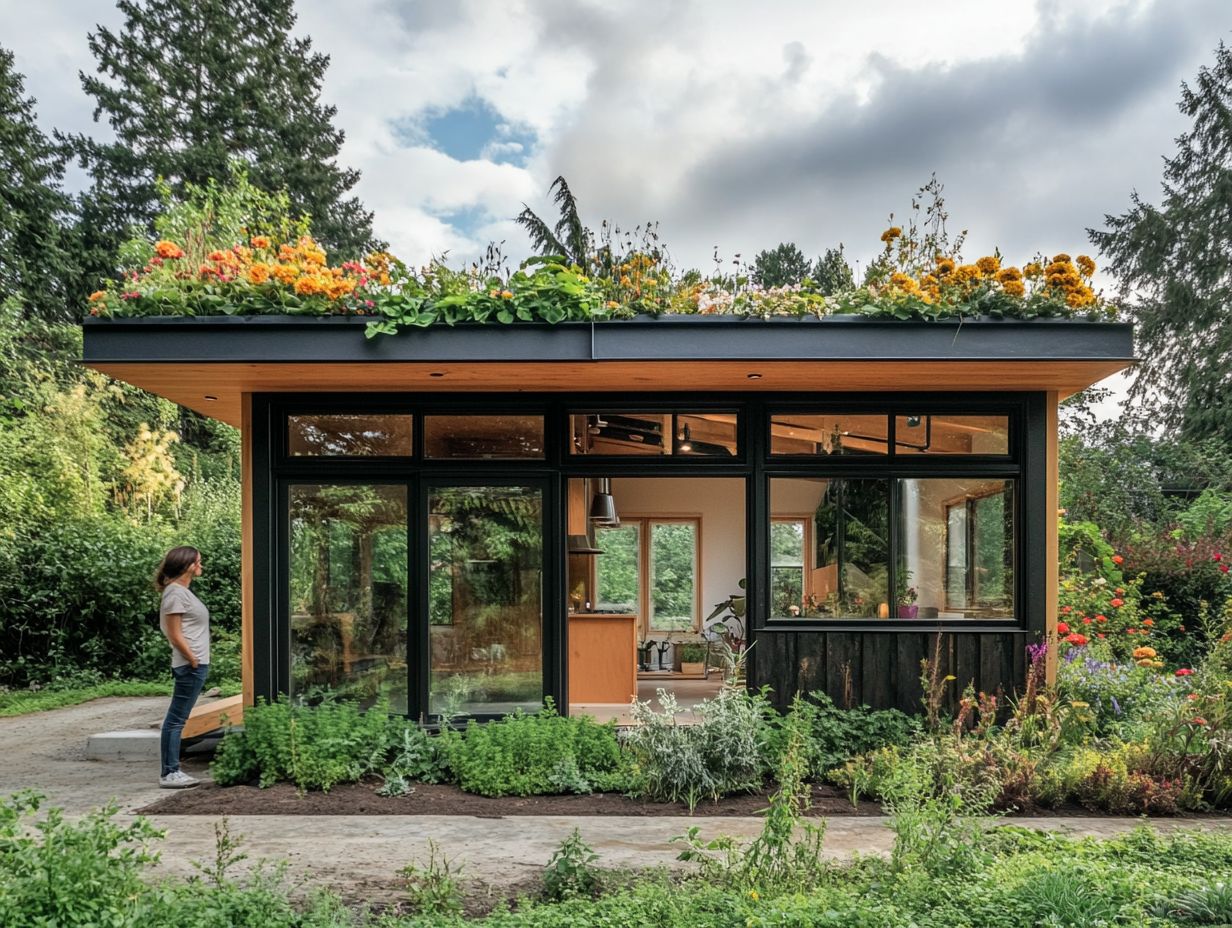
Unique design elements include multi-functional spaces, hidden outdoor living areas, and tiny house designs with modular building options.
How have tiny house innovations addressed sustainability and eco-friendliness?
Tiny house innovations incorporate sustainable materials, off-grid solutions, and efficient use of resources in their design and construction. This showcases a commitment to environmental stewardship.
What are some challenges associated with exploring tiny house innovations?
Challenges may include zoning laws, building code restrictions, limited living space, and adapting to a simplified lifestyle.
What are some factors to consider when choosing a tiny house innovation to live in?
Factors to consider include budget, location and climate, personal living needs and preferences, and future adaptability of the design, especially regarding housing market trends.
How can individuals stay updated on new tiny house innovations and designs?
Individuals can follow tiny house blogs, attend tiny house events and workshops, and join online communities dedicated to tiny living trends and design.

